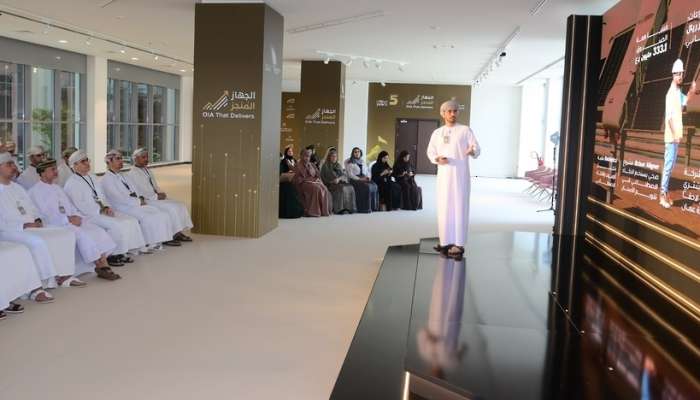
Muscat: In line with its commitment to transparency and disclosure, and as part of its ongoing growth trajectory across its investment portfolios, Oman Investment Authority (OIA) unveiled its 2024 financial results. The report highlighted a rise in its assets to over OMR20 billion, with profits reaching OMR1.585 billion.
Additionally, OIA injected OMR800 million into the state budget, a step that has earned it global ranking as the 8th sovereign wealth fund in terms of five-year investment return rate, according to a report by SWF Global.
To mitigate investment risks and maximise long-term benefits, OIA continued to diversify its investments geographically and sector-wise. Its investments spanned over 50 countries through its three portfolios: the National Development Fund (NDF), the Future Generations Fund, and Future Fund Oman (FFO). Oman-based investments take the largest share of 61.3%, followed by North America with 19.9%, then Europe, Asia, Africa, and Latin America.
Sector-wise, the local portfolio, the NDF, aligned with Oman Vision 2040 targets. The energy sector accounted for 68% of its investments, followed by tourism and real estate at 9%, and services and logistics at 8% each. The remaining share was distributed among strategic sectors such as mining, industry, food, and telecommunications. The NDF invested approximately OMR1.9 billion in local projects in 2024, surpassing the target of OMR1.7 billion. Notable projects included the Duqm Refinery in the energy sector, the redevelopment of the the Lasil and Al Baydha copper mines in mining, the Asyad Container Terminal in logistics, and the launch of the Manah 1 and Manah 2 solar power plants in the public utilities sector.
Meanwhile, the international Future Generations Fund invested in 13 global funds across diverse sectors, including technology, artificial intelligence, energy, healthcare, and fintech. It also invested in Elon Musk’s xAI, reflecting OIA’s focus on supporting global digital innovation and localizing advanced technologies.
Future Fund Oman, which began operations on 17 January 2024, received 294 investment applications in various sectors that align with the economic diversification plans. The fund approved 44 proposals following robust and rigorous assessment standards. Its contributions to these projects totalled OMR333.1 million. Key projects included the SoharPolySilicon plant—the largest outside China with an annual production capacity of 100,000 metric tonnes—and strategic partnerships with IDG Capital and ewpartners to attract global industrial companies by establishing three investment funds exceeding OMR250 million, targeting sectors like ICT, energy, agriculture, renewables, healthcare, and electric vehicles.
OIA continues to deliver on its national agenda, focusing on attracting foreign investment, empowering the private sector, enhancing credit ratings, building national capacities, and maximising local content and innovation. The NDF attracted OMR3.348 billion in foreign direct investment in 2024, primarily in energy, followed by tourism and mining.
In line with its commitment to reducing public debt and ensuring financial sustainability, OIA repaid over OMR1.846 billion in the debts of its companies including OMR545 million for OQ Group before maturity. Government guarantees were also reduced by OMR1.3 billion, lowering the total from OMR3.4 billion in 2023 to OMR1.8 billion in 2024.
OIA also progressed its divestment program to attract foreign capital and empower the private sector. It exited six assets in 2024, exceeding its target of five, including the highly successful IPO of 25% of OQ Exploration & Production’s total shares, and divestments from OQBI. Proceeds from these successful IPOs were redirected to new projects supporting economic diversification.
In its efforts to develop human capital and employment, OIA created 1,393 new jobs for Omanis, raising the Omanizationrate to 77.7%.
Local content initiatives saw remarkable progress, with OMR265.5 million spent on SMEs in 2024, including OMR139 million for Riyada cardholders. SMEs accounted for 19.7% of total supply chain spending.
OIA also expanded its local content programs, launching the third edition of its mandatory list, which includes 311 products and services that should be sourced exclusively from local SMEs. OIA also approved 32 scopes under its ring-fencing programme with a total of OMR71 million, and helped in the development of 38 SMEs with OMR11 million.
Abdulsalam bin Mohammed Al Murshidi, Chairman of OIA, noted that 2024 marked sustained positive momentum, with most performance targets exceeded, particularly in local content, foreign investment, and job creation. He attributed these achievements to the efforts of OIA’s national talents and people.